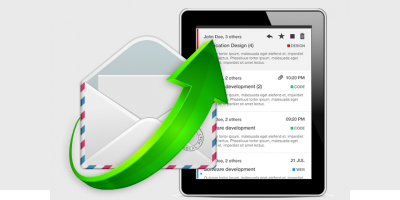 Email is still an irreplaceable communication channel when it comes to business relations. So, in today’s fast-paced everyday life where every second counts, if you fail to receive an important email on time, you could run the chance of missing vital opportunities for you and your business.
Email is still an irreplaceable communication channel when it comes to business relations. So, in today’s fast-paced everyday life where every second counts, if you fail to receive an important email on time, you could run the chance of missing vital opportunities for you and your business.
Technically speaking, a constant connection between the mail server and the mail clients is needed, so no en-route delay in email delivery is permitted.
Here is where the ‘Push Email’ functionality for the IMAP protocol (IMAP stands for the outgoing mail server) kicks in. Chances are you’re already utilizing this awesome function and didn’t even know it.
What is IMAP IDLE?
IMAP IDLE is a simple, yet very effective protocol for keeping you notified for incoming email messages the moment they are sent to you.
Normally, if IMAP IDLE is not enabled on the server, an email client will have to constantly connect to the server to check for new messages. This connection will be refreshed by the email client at regular intervals, leading to consumption of considerable amounts of Internet traffic.
While this would not be an issue for a desktop user, a mobile user will see the difference in his monthly mobile data usage bill.
With IMAP IDLE enabled for the IMAP protocol, the mail client on your device will keep a persistent connection with the server and considerably less traffic (several bytes a day) will be consumed in the process.
How does ‘Push Email’ for IMAP work?
With a hot connection maintained between the sending mail server and the mail client on your device, you will be notified of new inbound messages in an instant. There will be absolutely no delay whatsoever.
Thus, you will never miss an email from an important business partner. Moreover, as a mobile user, you will be able to reduce data usage.
IMAP IDLE enabled on all our servers
The ‘Push Email’ functionality is supported by almost all Operating Systems and email clients.
It is enabled by default on all our web hosting servers, so you do not need to do anything on your end to set email pushing in action.
